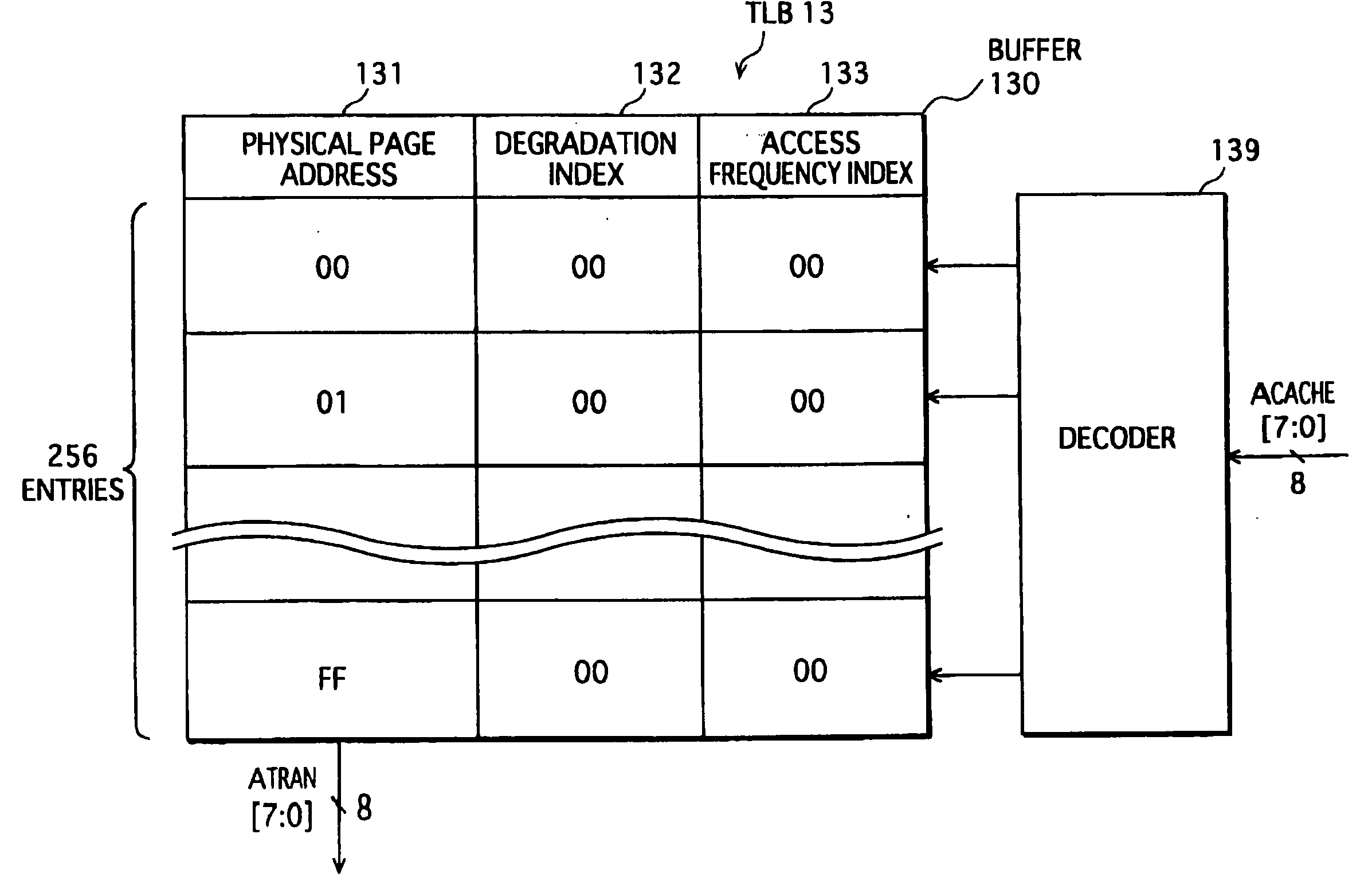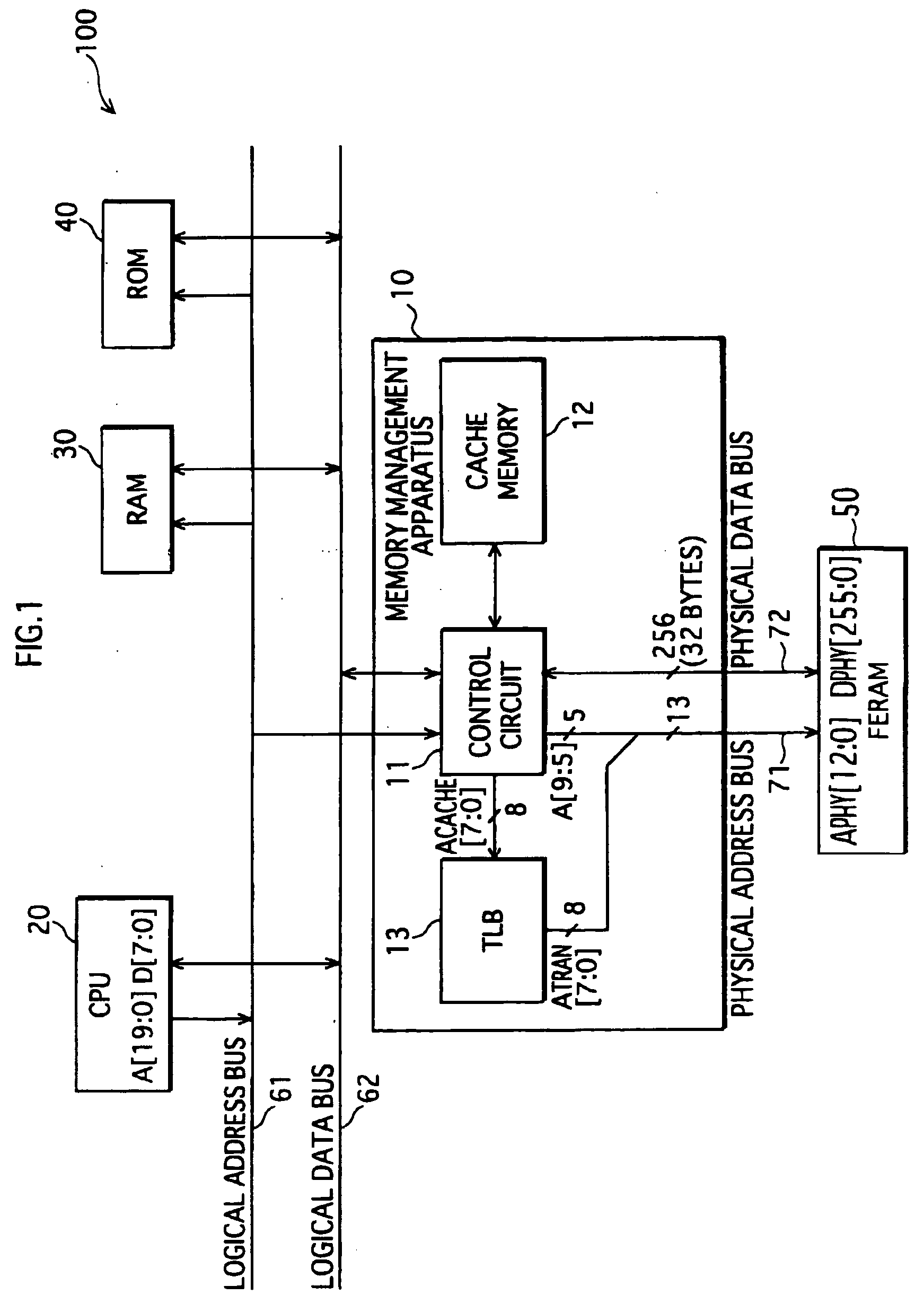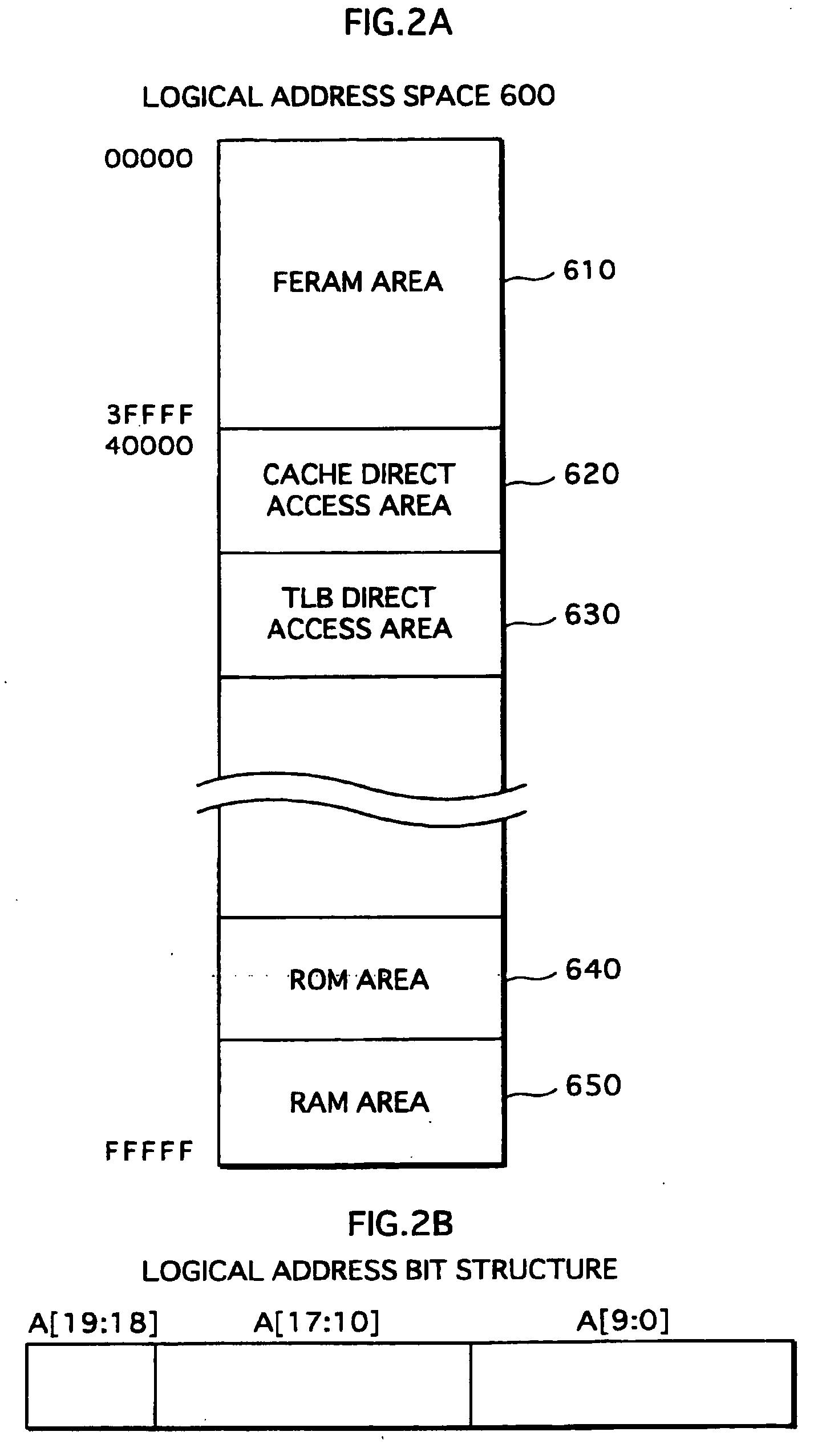Apparatus and method for memory management
a memory management and apparatus technology, applied in the field of apparatus and a memory management method, can solve the problems of memory device coming to the end of its usable life earlier, specific location degrades outstandingly, and fails to store data
- Summary
- Abstract
- Description
- Claims
- Application Information
AI Technical Summary
Problems solved by technology
Method used
Image
Examples
embodiment 1
[0184] As described above, according to the memory management apparatus of the embodiment 1, each access frequency index represents the access frequency of a corresponding logical page, while each degradation index represents the degradation degree of a corresponding physical page. The memory management apparatus exchanges the contents between a physical page that is mapped to a logical page having a largest access frequency index and a physical page having a smallest degradation index, and subsequently modifies the mapping between the related logical pages and physical pages accordingly.
[0185] That is to say, a physical page that degrades significantly because the physical page has been mapped to a frequently accessed logical page is newly mapped to a less frequently accessed logical page. In addition, the frequently accessed logical page is newly mapped to a least degraded physical page. This operation is performed periodically, so that it is avoided that one or more physical page...
embodiment 2
[0191] Similarly to the memory management apparatus described in the embodiment 1, a memory management apparatus according to an embodiment 2 of the present invention is for leveling degradation of physical pages by periodically exchanging the contents between a first physical page that is mapped to a frequently accessed logical page and a least degraded physical page. The memory management apparatus of the embodiment 2 differs from the memory management apparatus of the embodiment 1 in how access frequency indexes indicate the access frequency of each logical page.
[0192]
[0193] The structures of the memory management apparatus according to the embodiment 2 and of a computer system that includes the memory management apparatus is substantially similar to the ones described in the embodiment 1 (see FIG. 1). The only difference lies in that the cache memory does not have a cache access frequency index column. Illustration of the memory management apparatus and the computer system of t...
embodiment 3
[0227] Similarly to the memory management apparatus described in the embodiment 1, a memory management apparatus according to an embodiment 3 of the present invention is for leveling degradation of physical pages by periodically exchanging the contents between a first physical page that is mapped to a frequently accessed logical page and a least degraded physical page.
[0228] Intended for use where the absolute number of accesses is relatively small, the memory management apparatus of the embodiment 3 differs from that of the embodiment 1 in that the cache memory is not provided, and thus different access frequency indexes are employed.
[0229] Hereinafter, with reference to FIGS. 17-19, description is given to the memory management apparatus mainly to the points unique to the embodiment 3 while the points similar to the embodiment 1 are omitted.
[0230]
[0231] FIG 17 is a functional block diagram showing the structure of a computer system 200 that includes a memory management apparatus ...
PUM
 Login to View More
Login to View More Abstract
Description
Claims
Application Information
 Login to View More
Login to View More - R&D
- Intellectual Property
- Life Sciences
- Materials
- Tech Scout
- Unparalleled Data Quality
- Higher Quality Content
- 60% Fewer Hallucinations
Browse by: Latest US Patents, China's latest patents, Technical Efficacy Thesaurus, Application Domain, Technology Topic, Popular Technical Reports.
© 2025 PatSnap. All rights reserved.Legal|Privacy policy|Modern Slavery Act Transparency Statement|Sitemap|About US| Contact US: help@patsnap.com



